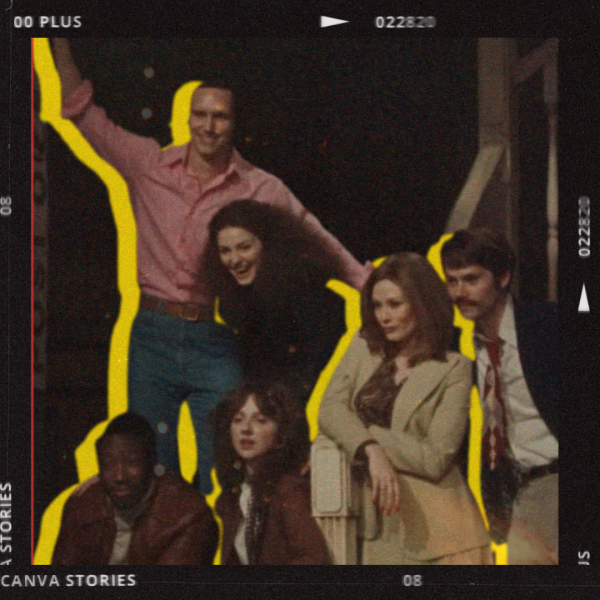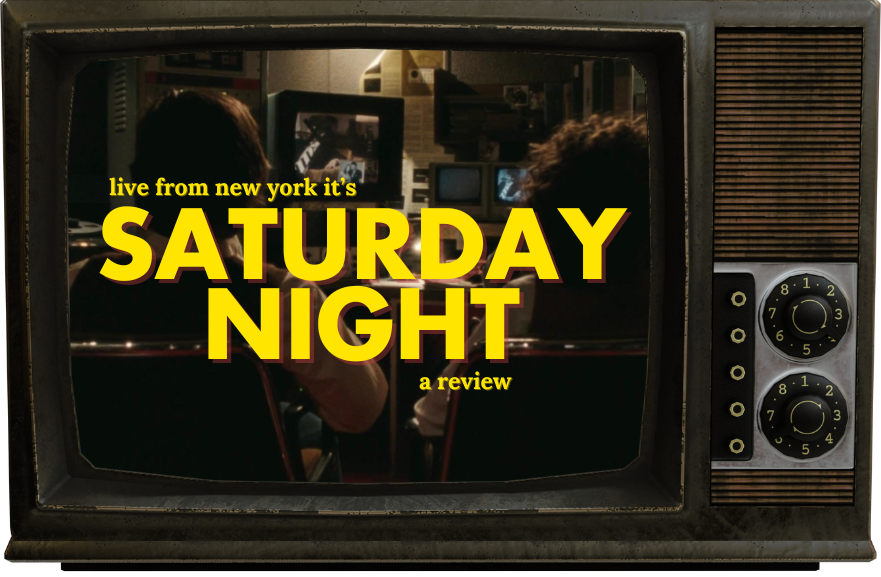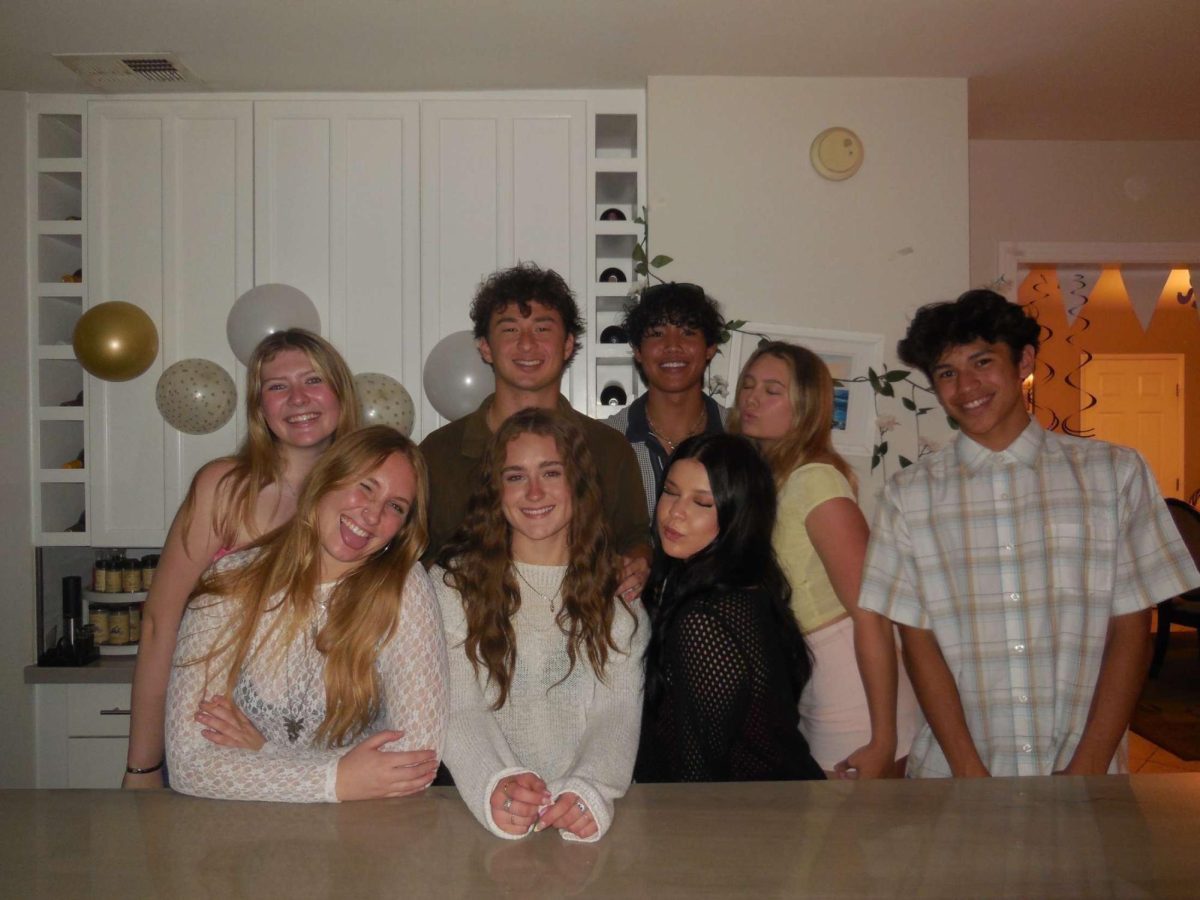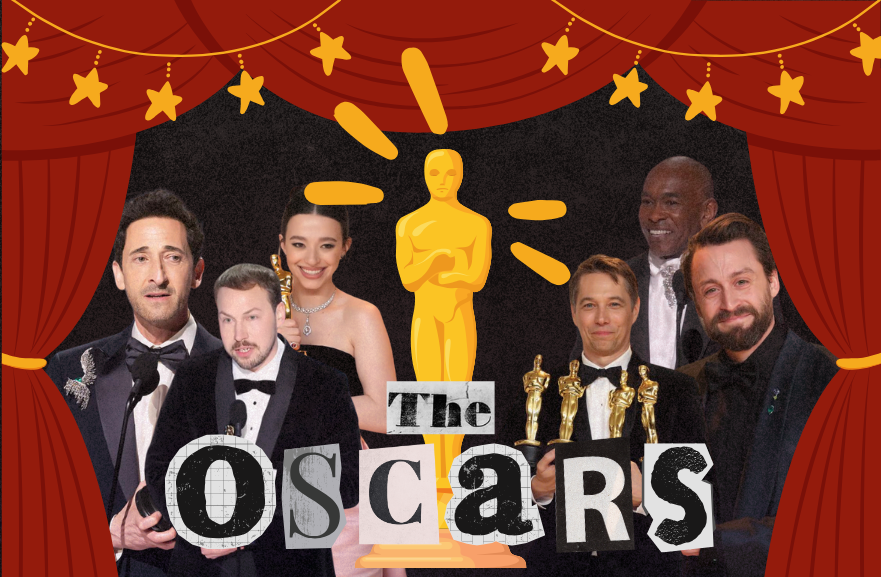“Saturday Night Live” (“SNL”) has been a staple in American comedy television for so many years that it’s difficult to imagine a time when actors like Chevy Chase or Dan Ackroyd weren’t household names and families didn’t tune in weekly to watch silly sketches play out on their TVs. Jason Rietman’s new film, “Saturday Night,” however, opens up the Pandora’s box of behind-the-scenes stress and shenanigans in the 90-minute lead-up to the first episode going live.
Gabriel LaBelle stars as Lorne Michaels, the young producer and creator of the show. His general panic throughout the film leads to many funny and heartfelt moments. The audience feels for the young artists and although everyone knows that “SNL” was successful and continues to be, the stakes are still incredibly high. It balances how exciting the night was—“revolutionary,” as Lorne Michaels himself would say—with the anxieties of the crew involved, especially the producer’s passion for the project.
The cinematography is where “Saturday Night” really shines, though. Rietman’s work, along with the skill of Eric Steelberg, the director of photography, make the grainy nostalgia of the 1970s a reality. The camera almost becomes a character itself, weaving through plotlines and crowded hallway conversations with ease.
The set, a recreation of the real studio at 30 Rockefeller Plaza, as well as extras trained to do the jobs they portray, only add the realism of the movie, making it feel like the audience is a fly on the wall, watching the night take place in real-time. This, along with random snippets of gags and interactions between fairly minor characters gives the impression that all the characters are real and exist outside of the camera’s focus.

Aside from LaBelle, the cast features Rachel Sennott as Rosie Shuster—Lorne’s long-suffering wife, and, more importantly, a writer—Dylan O’Brien as Dan Ackroyd, the silliest “certified male strumpet” with the best mustache in the studio and Cory Michael Smith as an egotistical and suave Chevy Chase. Smith is as excellent as he is annoying and O’Brien embodies the goofball energy of Ackroyd. Lamorne Morris plays Garrett Morris (no relation) and stuns with his surprisingly relatable existential dilemmas and a stunning vocal performance.
Despite taking place in real-time, “Saturday Night” has time cards every ten minutes to show the night’s progression. The audience knows that the cast and crew only have ninety minutes to pull the show together, so the inclusion of time cards is counterproductive and gets in the way of enjoying the story. Not to mention the fact that a reminder of how long is left in the play makes the pacing a bit sluggish. The hectic beat is interrupted and momentum is lost.
What does keep the high-paced tempo is the score: composed and performed by jazz musician, Jon Batiste. The variations on the usual “SNL” theme and additional songs not only set the tone and the time period for the film but add an extra layer of stress, propelling LaBelle’s performance into unhinged levels of hysteria as he struggles and claws his way to success, losing his composure but not his dedication.
“Saturday Night” is a testament to teamwork in more ways than one: recreating what was perhaps the greatest night in American TV comedy took a massive crew, itself. Reitman and his team show that one man can’t just think up great pieces of art alone and even if Lorne Michaels was the only person who could define “SNL,” he couldn’t have pulled it off himself.








